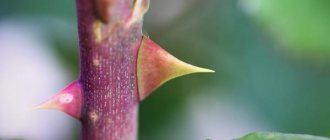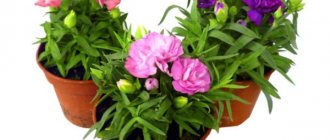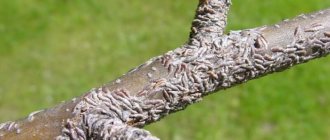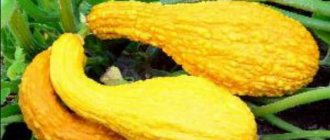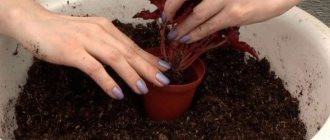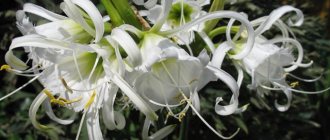Description of pandanus
Pandanus or pandan is an amazing plant. In nature, its size causes admiration. Some species have edible fruits. Inflorescences, roots, leaves are an integral part of traditional medicine and are even used in magical rituals. The strong leaf veins are used as weaving material.
Pandanus is an amazing plant that locals use everywhere
The tropics of the Eastern Hemisphere are the native land of the plant. There are about 750 species of pandanus in nature. On the island of Madagascar alone you can find almost 90 representatives of this species. The first description of pandanus was made by the French botanist and traveler Jean-Baptiste Bory de Saint-Vincent. The original name, pandan, comes from the Indonesian name for the plant.
Pandanus grow in coastal areas, on sandy and rocky soil. They can be found in dry, mountain and alpine forests, along the edges of volcanic craters and on their slopes. Coral reefs are also overgrown with these amazing plants.
Pandanuses grow in different places, but are more common in the coastal zone
Pandanus is often called a palm tree, more precisely a screw palm or even a pine tree. It is somewhat similar to dracaena. But pandanus has nothing in common with these plants.
The plant belongs to the genus of tree-like evergreen plants of the Pandanaceae family. Sometimes it develops in the form of a bush. Pandanus is a powerful tree, the height of its trunk reaches 15 m, and often reaches a height of 25 m. But at home its size is much more modest - only 1.5 m. Young specimens do not grow very quickly. Mature plants grow leaves more intensively.
Video: pandanus in its natural habitat
The trunk is formed as old leaves lose their life. Its surface, with traces of leaves growing in a spiral, resembles a screw (hence the name - screw palm). The trunk can branch like a dracaena. Another interesting feature of pandanus is its roots. The adventitious or stilt roots extending from the trunk are an excellent anchor that holds the tree in place during strong winds and hurricanes. There are times when the trunk of a plant dies, and then the support of the pandanus becomes aerial roots that have grown into the ground and become woody.
Powerful aerial or stilted roots help pandanus stay in place during strong winds
The leaves are narrow and long, linear in shape. The length sometimes reaches 3 - 4 m, width - 10 - 15 cm. They are located on the trunk in the form of a spiral, in 2 - 4 rows. The leaf blade is rigid, strewn with sharp teeth along the edge, and is very reminiscent of a pineapple leaf.
The narrow and long leaves of pandanus, with thorns along the edges, resemble pineapple leaves
Flowers are unisexual. The male ones are collected in inflorescences similar to spikelets. Female - resemble a cob or cone. The fruits are red, fleshy. Somewhat reminiscent of pineapple.
Pandanus flowers are unisexual
Growing pandanus at home is not difficult. You just need to take into account some of its features and follow simple conditions of detention. Pandanus is an ideal option for those who love fast-growing but unpretentious plants. It is also suitable for beginner flower growers, as it is ready to put up with some mistakes. The only drawback is that it requires a lot of space and in small rooms an adult plant will be cramped. The ease of care and the beauty of the leaves, similar to green fountains, made this plant an ideal option for decorating winter gardens, spacious halls, hotel and restaurant interiors. At home and in countries with warm climates, pandanus is used in landscape design.
Video: pandanus or screw palm
If there is a child in the house, then you need to explain to him that pandanus leaves are prickly and should not be touched with your hands.
The only drawback of pandanus is that it needs a lot of space for normal development.
Types and varieties grown indoors
Of the huge variety of pandanus, only a few species can be found at home.
| Types and varieties | Description |
| Roofing pandanus | Evergreen perennial, 1.5 m high. Adventitious roots extend from the shortened trunk. The leaf is narrow, serrated along the edge. Length - 90 cm, width - up to 8 cm. Leaves are leathery, green. It doesn't bloom in the room. Local residents use the dense leaves as material for house roofs. This species is also used to make hats, baskets, rope and even sails for small boats. |
| Veitch's Pandanus | One of the most common in indoor floriculture. Belongs to variegated or variegated species. The height of the plant sometimes reaches 2 m. The leaf, 60–90 cm long, is strewn with sharp thorns along the edge. The trunk is short, aerial roots extend from it. The dark green surface of the leaf plate along the edges is decorated with longitudinal stripes of white or yellowish color. |
| Pandanus Sandera | This plant has a more modest size. Leaf length is 80 cm, width – 5 cm. The edges of the leaf plate, green with a yellow stripe along the central vein, are strewn with small teeth. |
| Pandanus useful | The room reaches 2 - 3 m in height. The hard leaves along the edge are strewn with sharp spines of a reddish hue and are located on the stem in a helical shape. The length of the leaf plate reaches 1.5 m. |
| Pandanus Baptista | The height of the plant is 2 m. The decoration is a lush cap of narrow leaves. They are leathery to the touch. The green leaf plate is decorated with yellow stripes. Has smooth leaf edges. |
Photo gallery: domesticated pandanus species
Roofing pandanus is used as a material for roofs
Pandanus Veitch is the most common in indoor floriculture.
The leaves of Pandanus Sander are decorated with a yellow stripe, located according to class=”aligncenter” width=”400″ height=”337″[/img] The edges of the leaves of pandanus useful are strewn with red spines
Pandanus Baptista has smooth leaf edges
How to properly grow indoor pandanus palm
In addition to its interesting and exotic appearance, the advantage of pandanus, the so-called indoor “palm tree,” is its unpretentiousness to its environment. Therefore, even beginners in floriculture can create the necessary conditions for its full growth and development at home. You just have to learn the basic rules of growing.
- Location: bright, several hours of sun a day will be enough to maintain all vital processes within normal limits.
- Temperature: warm, not lower than 15 °C, taking into account the tropical origin of the ornamental plant. Drafts are undesirable and can significantly worsen the condition of the leaves. Air humidity: without any special claims or requirements, it can be minimal, but in some cases it causes drying of the tips of the leaf plates.
- Substrate: flower soil mixture with 1/3 loam.
The described modest requirements for the full growth of an ornamental plant will not create much trouble even for beginners. They are the complete and comprehensive instructions on how to properly grow pandanus and achieve the desired results without experience in floriculture.
Conditions for keeping pandanus
Even such an undemanding plant as pandanus will be pleased if the grower creates conditions for it that are similar to natural ones.
Table: seasonal conditions of detention
| Season | Lighting | Temperature | Humidity |
| Spring | The light requirements of different species are slightly different. Plants with striped leaves prefer bright but indirect light. To avoid burns, pandanus should be protected from high solar activity by hiding it behind a light curtain. Species with green leaf blades are more shade-tolerant. They can even grow in the back of a room. The most suitable direction for lighting pandanus is eastern or south-eastern windows. In the northern direction, even in summer, there will be a lack of lighting. For uniform development of the leaf mass of the plant, it should sometimes be turned to the light source with the opposite side. | Accustomed to warm climates, pandanus prefers stable warmth at home without sudden temperature fluctuations. The flower develops quite confidently at thermometer readings of 20 - 220C. Although it can easily survive 280C heat. | Pandanus tolerates dry air well, but keeping it in low humidity all the time is disastrous. In summer, the plant should be periodically sprayed and the leaves should be wiped with a damp cloth to remove dust (when caring for the leaves, be sure to protect your hands by wearing gloves). Showering is still not recommended, as water accumulating in the axils of the leaves can cause rotting. The optimal humidity should be approximately 60%. |
| Summer | |||
| Autumn | In winter, it is better to place a flower near a south window. Due to its large size, pandanus cannot always be placed on a window, so in short daylight conditions you need to use additional lighting. | The minimum temperature threshold allowed in winter is 180C; if it is lowered, the plant may experience problems. Of all the species, only Dwarf and Useful can briefly tolerate low temperatures of up to 120C. | In winter, the plant should be kept away from heating devices. To maintain the required level of humidity around the plant, it is worth placing the pot on a tray with moistened expanded clay. The main thing is that the drainage holes do not touch the water. |
| Winter |
Pandanus prefers bright but diffused light
On many sites you can find information that pandanus and the street are incompatible things. You can take pandanus outside in the summer, but under certain conditions. The temperature should be consistently warm, without sudden drops at night. The plant will do well on a glassed-in balcony. You can enjoy fresh air during the day, and close the window at night so that the drop in temperature does not harm the plant. And yet, in such a secluded corner, wind and drafts will not be scary.
Pandanus and florarium
Due to its large size, pandanus is not suitable for growing in florariums. Even if it is placed there, the plant will experience difficulties, since it needs space for full growth. Grown in an unlimited space, pandanus looks great as a single plant or surrounded by other green fellows.
To reveal its potential, pandanus needs unlimited space.
Signs associated with pandanus
Some flower growers are hesitant to decorate their home with pandanus because they do not know for sure whether it is possible to keep it in their home? The fact is that there is an opinion among people that this plant is capable of absorbing all positive emotions, after which it transforms them into aggressive energy, which has an extremely negative effect on unbalanced people, as a result of which they become overly active and angry. Experts do not recommend planting this flower for impressionable people who have an extremely difficult time withstanding any troubles, since they may feel uncomfortable next to a pandan.
This plant is suitable for people with a strong nervous system, as well as for beginners and experienced gardeners. It can also be grown by those who often go on business trips, as it is distinguished by its unpretentiousness, rapid growth, and also does not need to be watered often.
Pandanus (Screw Tree). Wonderful Unpretentious Plant for Home and Office
Planting and transplanting
For normal development, a young pandanus needs an annual change of pot for 5 years. Moreover, the new pot should not be large in size; it is permissible to exceed the previous one by only 2 or 3 cm. The bottom should have holes to remove excess moisture. Young specimens can be planted in plastic containers. For large plants you need to choose a stable pot. When purchasing a pot, do not forget to buy medium-sized drainage. For large containers it is better to use a large fraction.
Adult pandanuses are replanted no more than once every 3 years. The new container should be approximately 1/3 higher than the previous one. The width of the pot is standard. The apparent power of aerial roots is actually very deceptive. They are very fragile, so replanting is done exclusively by transferring the plant from one container to another. Removing such roots is strictly prohibited. To prevent them from drying out, you can use wet moss wraps.
The aerial roots of pandanus are very fragile, so you need to be extremely careful when replanting.
Potted plants are not replanted at all. For them, it will be enough to replace the top layer of soil in the tub with a more nutritious one. This is done once a year or 2 times. When the pandanus is prepared for transplanting into a tub, not 1, but 3 parts of turf soil are added to the prepared earthen substrate so that the plant has enough nutrients for a long time.
To curb the growth of pandanus, replanting is carried out less frequently, only replacing the top layer of soil, just like in tub specimens.
The soil for pandanus needs to be nutritious and loose, but containing a small amount of clay. You can use commercial palm substrate. Those who like to make soil mixtures with their own hands need to mix the following components in equal parts:
- greenhouse soil - 2 parts;
- clay soil - 1 part;
- peat - 1 part;
- coarse sand - 1 part.
Or this option - turf and leaf soil, river sand and humus. The components are taken in equal parts.
When preparing the soil, mix all ingredients well
Soil acidity also matters. A suitable pH is around 6.
Step-by-step transplant process
- Pour drainage into a new container in a layer of 1/3 of the total volume.
- Place a small portion of the substrate on top.
Place a layer of soil over the drainage
- The edges of the leaves of an adult pandanus are strewn with sharp spines. Therefore, when starting work, first put on gloves. Then carefully collect the leaves of the plant into a bunch and tie with a ribbon. Otherwise, scratches cannot be avoided.
- With the pot on its side and carefully using a flat spatula, remove the plant. There is no need to clear the soil from its roots.
- Place the pandanus in the center of the new pot. Holding the plant, add the rest of the soil to the sides.
Holding the pandanus, add the remaining soil mixture
- To compact the soil and fill the space between the roots, water the plant. Wait for excess water to collect in the pan and drain.
- The planting level of the pandanus should remain the same, and the aerial roots should remain above the soil surface.
Pandanus purchased in a store cannot be replanted immediately. The plant must be given time to adapt - about 10 days.
Does pandanus need support?
In general, pandanus does not need support. But there are situations when the flower begins to grow one-sidedly. This happens with overgrown and not transplanted plants in time, moreover, located in a room with dry air. Under such conditions, aerial roots stop growing and cannot further support the flower. If you can’t replant, then place a support next to the pandanus - a strong bamboo stick will do.
There are situations in which a pandanus cannot survive without support.
Propagation of screw palm
Indoors propagation is carried out in three ways: cuttings, dividing the bush and seeds.
Pandanus seedlings.
Cuttings
To begin with, we cut several cuttings, the length of which varies within 20 centimeters. Make cuts from long side branches. Long cuttings are needed so that rooting occurs quickly, since on short cuttings the formation of roots can take a long period.
After cutting, treat with activated carbon. We plant the resulting cuttings in pre-made soil consisting of peat and sand in identical proportions. Also, to create a greenhouse effect, we cover it with film, the temperature amplitude corresponds to 25-30 degrees . Despite the greenhouse conditions, ventilation plays an important role in the further formation of the plant.
The normal rooting period is 2-3 months. This process is accelerated by the use of growth stimulants.
Dividing the bush
Occurs by separating daughter rosettes from the main bush. In order to increase the rate of root growth, sphagnum moss comes to the rescue; a shoot is applied to it, and the moss maintains the moisture level at a constant level.
Dividing a palm bush for planting.
Pandanus mainly reproduces in this way in warm weather, especially in spring. The separated rosettes are dried a little and then planted. Of enormous importance for beneficial rooting is the drainage layer, the basis of which is large sand and clay. Next comes the turf, its layer thickness is about 7 centimeters, and is completed by well-washed sand. They are planted to a depth of 2-3 cm and the soil layer around the plant is compacted. During the process of root formation, the rosettes are under a film, in a kind of “greenhouse”, the temperature of which is maintained constant. Qualified flower growers advise heating containers from below. The process itself lasts about 1 month.
Seeds
Probably the simplest type of propagation of pandanus, which does not require almost any effort or expense.
The seeds are poured into the soil, the composition of which is sand and peat. A film is placed on top. If all conditions are met: watering, ventilation and maintaining temperature, the first sprouts appear on the 15th day. Their replanting begins as soon as three full leaves have formed.
And again, experienced gardeners give recommendations on creating a “greenhouse”, the bottom of which will be heated.
Care
Even such an indestructible plant, as it is jokingly called, like pandanus, needs proper care. It is very easy and will not be difficult.
Watering and effective fertilizing
Although pandanus grows on coasts where frequent flooding occurs, it does not tolerate excessively moist soil when grown indoors. Moreover, if the pot, as they say, is about to grow and the soil is heavy and does not conduct water well. The top layer of soil must dry out before the plant is watered again.
In summer, water the plant abundantly and be sure to remove any remaining water from the pan. In winter, you need to be more careful when moistening, especially if the pandanus is in a cool room. After the top layer has dried, you need to wait another 2–3 days before watering.
Watering should be sufficient so that the moisture wets the entire earthen ball, and not the surface, leaving the roots dry.
You need to water the pandanus abundantly so that the moisture moistens the entire earthen ball.
Under standard conditions, in summer the frequency of watering is once a week, in winter - once every 2 weeks. But this is all conditional. You need to rely on the specifics of your conditions of detention. The hotter it is, the more often you will water, and vice versa.
In addition to waterlogging, prolonged drying out of the soil is also extremely undesirable for pandanus. Dried and yellowed leaves will not decorate the plant, but, on the contrary, will ruin the entire impression.
The irrigation liquid should settle and be at room temperature. If wetted with cold water, the plant may become stressed and stop growing. It is very good to water with melt or rain water. An excellent effect is achieved by bottom watering, in which the liquid should have a temperature of 350C.
Liquid mineral fertilizers of universal purpose are used as fertilizing. Feeding in the spring-summer period occurs 2 times a month. In winter it is reduced to 1 time per month.
The transplanted plant begins to be fertilized only after a month or a month and a half. All this time, the pandanus will make do with the nutrients available in the soil.
Any universal fertilizer is suitable for pandanus.
In order to control growth, fertilizing is reduced to a minimum or stopped altogether. Without nutrition, pandanus growth slows down greatly.
Flowering period
This amazing plant blooms only in the wild. When grown indoors, flowering does not occur. But from time to time there are statements that, although rarely, the plant produces flower stalks at home.
Rest period
The plant does not have a pronounced dormant period. But in winter, pandanus practically stops growing. Feeding and watering at this time are carried out rarely and carefully. The temperature can be lowered slightly so that the plant can rest fully, because growth will continue in a warm room.
Recent Entries
5 working ways to use tar in the garden 7 indoor plants that help you get married even in adulthood Indoor plants that can bloom in trouble
But what really wouldn’t hurt is additional lighting. From autumn to spring, daylight for pandanus should last at least 8 to 10 hours. Therefore, the plant must be illuminated for up to 6 hours a day. To do this, install a fluorescent lamp at a distance of a meter from the flower.
In winter, pandanus needs to be illuminated
Crown formation
There is no need to specially form the crown of pandanus, since the plant has an apical growth type. In an adult plant, the trunk forms on its own as the lower leaves fall off. Only single-stem species are grown indoors.
In nature, as well as when grown at home, pandanus itself forms a trunk
Sometimes the trunk becomes overgrown with numerous children. Many gardeners leave them so that the lower bare part of the plant looks more luxuriant. But this is a matter of taste. You can root these shoots and get new plants.
To give the pandanus an aesthetic appearance, you need to periodically trim off the dry ends (if any). Trimming is done so that a small area of dead tissue remains, which will prevent further drying.
How care errors manifest themselves and what to do to correct the situation
As already noted, pandanus is very unpretentious. To grow a flower at home, you do not need to create any special conditions for it. But the inexperience of the grower can be the reason why the plant suddenly stops growing or its leaves begin to turn yellow. To correct the situation, you need to understand the error in time and eliminate it.
Table: care errors and their elimination
| Manifestation | Cause | Elimination |
| Leaf tips become dry and brown |
|
heating appliances. Pandanus leaves need to be sprayed periodically and the humidity around the plant increased on hot days.
I'm thirsty. Water properly. |
| Leaves lose color and become almost white |
watering. |
but its excess negatively affects the color of the leaves. At noon the plant needs to be shaded.
water for at least 24 hours. |
| Young leaves grow small, the bright stripes on them fade and turn green. | Not enough light | Variegated pandanus species require a little more light than monochromatic ones. But you should still shade it from direct sun. |
| Leaves turn yellow |
|
not enough.
|
| Light necrotic spots on leaves | Sunburn. | Shade the plant from direct sun, especially in summer. |
| Leaves grow small and yellow | Lack of nutrients. | Do not forget that pandanus definitely needs feeding to grow. |
| The lower leaves dry out and fall off | Natural aging process. | Over time, the lower leaves fall off, forming the trunk of a false palm. This process is inherent in nature itself. Therefore, if the young leaves grow healthy, then there is no need to worry. |
Photo gallery: typical mistakes made when growing pandanus
Dry and brown tips of leaves are evidence of insufficient watering and low air humidity
Excessive lighting causes pandanus leaves to become light, almost white.
Necrotic spots on leaves are the result of sunburn
Problems in caring for pandanus
When caring for a pandanus, a number of problems may arise:
| Leaf problem | Cause | Solution |
| Appearance of a brown tint at the edges. | Dry air, lack of moisture and nutrients. | Dried tips of leaves are cut off to prevent damage to the rest of the pandanus. Water generously and add nutrients. |
| Yellowing. | Excessive moisture, rotting of the root system. | The plant is removed from the substrate and the rhizome is inspected for damage. The rotten parts are removed with a sharp knife, and the sections are treated with brilliant green. The palm tree is transplanted into new soil and air humidity is provided at 60%. |
| Fading color. | Bright lighting, use of hard water for irrigation, excessive calcium content in the soil. | Shade or move to another place. For irrigation use settled water. |
| Drying. | Sunburn. | The palm tree is moved to a dark place. |
Diseases and pests
Pests and diseases are extremely rare on this hardy plant. But, I repeat, improper care can become the catalyst that provokes both fungal diseases and the appearance of pests.
Table: diseases and pests of pandanus, control measures and prevention
| Diseases and pests | Symptoms and manifestation | Control measures | Prevention |
| Leaf spot | A fungal infection affects the leaves. Spots of different colors appear on them, having a round or oval shape. With high humidity, the leaves wilt. |
Spray with one of the fungicides - Topaz, Fundazol. Please read the instructions carefully before use.
3 or 4 times. |
loose, well permeable to water.
keep under control to prevent increases.
waiting until the top layer of soil dries. |
| Root and stem rot | The most common disease caused by excessive watering and cold air. The leaves initially become yellow and limp. Then they get dark. Rotten areas appear on the roots and trunk. The plant may quickly wither. |
pot.
damaged areas of roots.
Cuprosan or Chometsin for 15 minutes to kill fungi.
coal.
with disinfected soil mixture.
fungicide. If the disease has damaged the trunk, then you need to cut off and root the top. | |
| Shchitovka | The leaves become covered with brown tubercles and sticky secretions. Pests hiding under the shield actively suck the juice from the leaves. As a result, the leaf dries out and curls. |
the following drugs are used: Karbofos, Actellik, Fufanon. Instructions included.
treatment is carried out 2 - 3 times at intervals of a week. Medicines can be changed. Treat in the fresh air or with an open window, as the drugs are toxic. |
To get rid of a recently manifested pest, wipe the leaves with a napkin soaked in a solution of laundry soap (20 g of soap shavings per 1 liter of water). Wiping should be done every week, paying special attention to the scale insects.
tincture of onion or garlic.
allow it to increase or decrease.
in which pandanus grows. |
| Mealybug | Has a cotton-like coating appeared in the leaf axils? This indicates a mealybug infestation. The leaves turn yellow, fall off, and growth stops. The plant is weakening. | ||
| Spider mite | The most common pest that appears if the air is very dry. Its presence is indicated by a thin cobweb. The pest sucks juices from the leaves through small punctures, which appear as small dots. The leaves curl, dry out and fall off. |
Photo gallery: diseases and pests
Leaf spotting appears when watering rules are not followed and humidity increases.
Putrefactive processes in the stem and roots can lead to the loss of the plant
The scale insect is very insidious, you need to be vigilant when fighting it
Mealybug weakens the plant
Spider mites cause leaves to dry out
How to transplant pandanus: transplant sequence
Active growth of screw palm at home requires periodic replanting - every 2-3 years. It is this procedure that provides comfortable conditions for the normal functioning of ornamental shrubs. The first signal about the need to replant an indoor pandanus is the soil entwined with roots. The sequence of this process is simple and covers the following steps:
- Firstly , carefully handle the adult plant, while trying not to damage the fragile aerial shoots. It is not worth clearing the rhizome from the soil, since such actions can damage the entire flower.
- Secondly , when choosing a pot, you should give preference to a deep vessel, at the bottom of which a third will be occupied by drainage. To avoid scratches from the sharp thorns of the bush, you can carefully collect the foliage into a bunch.
- Thirdly , it is necessary to place the pandanus in a new pot at the usual level, without deepening it.
Replanting: If necessary, do not make the procedure more frequent, as this will stimulate the growth of the screw palm.
Important! Despite the presence of supporting aerial roots, tie it to a bamboo support. Supporting roots will eventually push the plant out of the pot. When replanting, do not take a larger pot, otherwise the plant will grow too large for the room.
Considering the described sequence of actions, even an inexperienced gardener will be able to figure out how to properly transplant a pandanus and achieve the desired results.
Optimal growing conditions
Fatsia
The screw palm is not demanding. She needs no more attention than other plants. Let’s analyze in more detail the conditions under which the pandanus will be comfortable.
Location and lighting
There is an opinion that pandanus has very aggressive energy and makes people in the room angry. It is noted that the caustic energy of the flower contributes to the formation of wit. Therefore, it is not advisable to place it in the bedrooms and homes of sanguine people, but in classrooms, offices, work rooms and the abodes of weak-willed, weak-willed people, it will be very useful.
Because it prevents you from dozing off, enhances brain activity, and activates your performance. In addition, flower growers claim that the screw palm acts as a protector of the house, protecting it from other people's unnecessary energy.
The screw palm loves light, but not direct and burning rays of the sun, but gentle, diffused ones. Moreover, lighting should be plentiful all year round. In the off-season, direct ultraviolet radiation is more gentle and therefore completely harmless, but in the summer it can burn foliage. In hot weather, it is advisable to shade the windows using blinds or tulle. In winter, when there is little natural light, it is necessary to connect fluorescent lamps for 6-8 hours.
Important! From a scientific point of view, pandanus is completely harmless: it does not emit toxins, the foliage does not cause allergies and does not pose any threat to people. Botanists claim that the plant, on the contrary, cleanses the air of pathogenic microflora thanks to the essential oils found in its composition.
Temperature
Like all palm trees, pandanus love warmth. At home in the summer season, the optimal temperature for cultivating a flower is from 20 to 25°C. In hot weather, the permissible thermometer level is 30°C, but this is already the limit of the capabilities of a moisture-loving plant. Therefore, in this temperature regime, daily watering several times will be appropriate.
In winter, the screw palm will grow comfortably at +18°C. It is possible for the temperature to drop to 15°C, but in the cold there is a very high risk of destroying the crop.
Interesting features
The plant is unique in that throughout its life it forms aerial roots in the lower part of the trunk, which grow and take root in the ground over time. These roots, which can also be called stilt roots, help the plant maintain balance and stability when it reaches a large size. If a plant lives in the wild, at a certain period the lower part of its trunk dies and it survives only thanks to these additional roots.
But you should not hope that caring for the pandanus plant at home will allow it to grow in this way. The plant is unlikely to root its stilted roots so firmly in the ground. This is only possible in nature, but does not mean that these additions need to be removed. The plant needs aerial roots, so they need to be strengthened and moistened. But in order for the grown, huge pandanus to stand firmly, it needs to be supported with special devices; it will not stand on its own.
In spacious natural conditions it produces flowers and bears fruit. Some of their species are even edible. They look like a pineapple. These fruits feed on crabs, which carry out the mission of distributing seeds. But if the plant lives in the house, it will neither bloom nor bear fruit. Although you should not be discouraged in this regard, and also give up hope, since there are still some probabilities, you will need to study the relevant literature and create optimal conditions, and you may also need to make an appropriate graft from a fruit-bearing plant.
- useful (P. utilis), the leaves of which reach 10 cm wide, have a dark green color, monochromatic;
- Sander (P. sanderi) - leaves are twice as narrow as the previous type - up to 5 cm, but with long white stripes;
- Veitch (P. veitchii) - its leaves are distinguished by yellow stripes on the edges.
Plant species
About 600 species of false palm grow in natural conditions. You can grow several types of screw palm at home.
- Pandanus Veitch. This tree-like plant was introduced from East Asia. It has a short trunk and aerial root shoots. Over time, the lower part of the trunk dries out and the pandanus remains suspended on the roots. This gives the impression that the tree is in the air. Veitch's pandanus leaves are dense, tough, and intertwined near the base. This variety grows very slowly. The maximum plant height is 1.5 meters.
- Pandanus is useful. It is distinguished by its large size, the height of the tree is about three meters. The leaves are light green, very dense, covered with reddish thorns. The length of the leaf can reach one and a half meters in length.
- Pandanus Baptista. Representatives of this species reach a height of two meters. The leaves are narrow and long. The platinum sheet is painted bright green and decorated with yellow stripes. The plant has no thorns.
- Roofing pandanus. The height of the palm tree is two meters. The leaves are long and narrow with slightly serrated edges. The leaf blade has a leathery surface. The name of the species was given by the practical use of the leaves of the plant by local residents as a covering material for the roofs of their homes. The leaves and bark of the plant are also used to make ropes and weave baskets.
- Pandanus sandera grows in the tropics of Timor. The trunk of this palm is short, but the leaves can reach a length of one meter. When kept indoors, it should be taken into account that the palm tree requires a lot of space for its leaves.
- Useful Pandanus. The leaves of the plant are arranged helically in 3-4 tiers. This variety of pandanus can be grown from seeds. With proper care, the plant can grow up to three meters in height.
About diseases and parasites
If the palm tree receives proper care and is kept in suitable conditions, it rarely gets sick. Most ailments are associated with violation of the maintenance regime:
- The foliage dries out, starting from the tips - a sign of dry air and/or lack of water in the soil.
- Falling of the lower leaves - this symptom is associated with natural aging. But if the process is too intense, then perhaps the plant does not have enough moisture.
- Shrinking of foliage, slowing of palm growth and disappearance of light stripes in variegated varieties indicate insufficient lighting.
- Brownish spots on the plates may be sunburn.
- Leaves become discolored - this most often happens when pandanus is watered with hard water.
- The foliage turns yellow - an alarming phenomenon, indicating the development of rot in the root system. Rot occurs when the soil becomes waterlogged against a background of low temperatures. The leaves may also turn yellow as a result of insufficient watering.
Pests are not particularly interested in indoor pandanus. Except that the most indiscriminate of them - mealybugs, spider mites and representatives of the scale insect family - can encroach on exotics. A small colony of parasites can be removed by treating the plant with a soap solution. If there are a lot of insects, then you should resort to more effective insecticidal preparations.
It is important! It is worth considering that fighting scale insects may require the use of several means, since the parasites are equipped with protective shields and may be immune to the action of many chemicals.
Popular types
Of the numerous representatives of the genus Pandanus, the following are grown in pots:
- Pandanus Veitch is an evergreen tree with a short stem and aerial “stilt” roots. The spiral-shaped green leaves with a white border along the edge reach a length of 1 m and a width of 5–8 cm. Among flower growers, Veitch's pandanus is most in demand due to its compact size - in 10 years, this pretty palm rarely grows above 1.5 m.
- Pandanus useful is a tall tree, reaching a height of 2–3 m in indoor conditions. Dark green leaves, 5–10 cm wide and about 1–1.5 m long, growing in a spiral, are densely dotted with reddish thorns at the edges.
- Pandanus covert is a branched evergreen shrub about 1.5–2 m high (in cultivation) with linear spiny leaves. In nature, this representative of the genus annually blooms white or pinkish flowers, in place of which fragrant fruits with sweet pulp are subsequently formed. However, in captivity, pandanus veil blooms very rarely and does not bear fruit at all.
An interesting fact is that, despite the attractiveness and unpretentiousness of pandanus, not all gardeners decide to grow screw palms. It is believed that this amazing plant has the ability to absorb positive emotions and bring discord into the house. Due to the powerful aggressive energy of pandanus, impressionable people feel discomfort around it and become angry and irritable. These rumors have not been scientifically confirmed, but vulnerable people probably shouldn’t have such an unpredictable pet. But non-superstitious fans of tropical exoticism will certainly be fascinated by the original appearance of the pandanus and its responsiveness to care.

